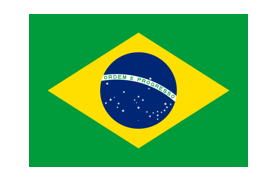Crystal - Lumbar plexus nerve injuries (Brazil) Posted on November 2, 2012
 Name: Crystal
Name: Crystal
Sex: Female
Country: Brazil
Age: 40
Diagnosis: Lumbar plexus nerve injuries
Admission Date: September 22, 2012
Days Admitted to Hospital: 29 days
Before treatment:
The patient suffered an accident in 2009 and fall off a step which was 2 feet high. She had paraesthesia below the hip joints and had no movement action at that time. She was sent to the local hospital and received a related examination. The result showed 12 thoracic vertebrate fractures to the spinal cord medulla penetrating wound. She received treatment for the injury, such as fixed with metal plate. After the operation, the patient's sensation in the lower limbs and motor function were restored gradually. Before the treatment, the patient suffered from paraesthesia of lower limbs and abnormal pain. She took analgesia medication regularly. The muscle strength of right lower limb's distal end was poor. She couldn't stand or walk independently for a long time.
Admission PE:
10cm below the right lower limb's knee, the diameter was 29.7cm. 10cm below the left lower limb��s knee, the diameter was 33cm. 15cm below right lower limb's knee, the diameter was 29cm. 15cm below left lower limb's knee, the diameter was 31cm. 20cm below the right lower limb's knee, the diameter was 29cm. 20cm below the left lower limb's knee, the diameter was 29cm.
Nervous System Examination:
The muscle strength of both upper limbs was level 5. The muscle strength of left lower limb was level 5. The muscle strength of right lower limb's near-end was level 4. The muscle strength of the plantar flexion of the right foot was weak. The right foot had no dorsal flexure. The muscle tone of the four limbs was normal. Bilateral biceps tendon reflex, musculus triceps brachii tendon reflex and radial periosteal reflex were normal. The patellar tendon reflex of the left lower limb had hyperreflexia. The patellar tendon reflex of right lower limb was not elicited. Bilateral ankle reflex was not elicited. The abdominal reflexes were not elicited. Bilateral Hoffmann sign was negative. Bilateral Babinski sign was negative. The superficial sensibility was allergy in left thigh's rear side, crus' back outside and the left foot's outside. The sensation in right thigh's rear side, crus' back outside, right heel and right sole pro 1/2 was weakened. The superficial sensibility in right calf's anteromedial 1/2 and right sole pars intermedia had hyperesthesia. The left side vibration sense and joint's topesthesia were normal. The vibration sense below the right ankle joint had disappeared. The right side joint's topesthesia was slowed down. She was able to do the rapid rotation test and digital opposition test in a stable manner. The heel-knee-shin test was unstable. The meningeal irritation was negative.
Treatment:
We gave Crystal a complete examination and she was diagnosed with lumbar plexus nerve injuries. We proceeded with the nerve nutrition, and improved the blood circulation to increase the blood supply to the damaged neurons. She also received treatment to strengthen nutrition. This was combined with daily physical rehabilitation training.
Post-treatment:
The dose of pain killer medication she takes orally was obviously reduced. The ache in both lower limbs is more alleviated than before and the alleviation of the left side is more obvious. The deep sensation of the right ankle joint and below is better than before. There is the appearance of deep sensation in the right foot inside and large toe. There is appearance of topesthesia in the large toe, too. The muscle volume of the right lower limb is fuller than before. The movement of the right lower limb is better than before. The plantar flexion muscle strength of the right foot has increased. She has dorsal flexure action and the action can provide some resistance.
